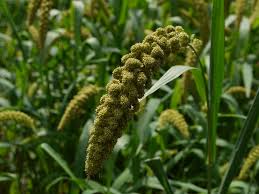
Disease Management in Foxtail Millet
Share
Introduction
Foxtail millet, known for its resilience and nutritional value, is a staple crop in many regions, particularly in semi-arid and arid climates. However, like all crops, foxtail millet is susceptible to various diseases that can significantly impact yield and quality if not managed effectively. In this blog, we will explore some common diseases of foxtail millet and effective management strategies to ensure healthy harvests.

Common Diseases of Foxtail Millet
Downy Mildew (Sclerospora graminicola):
Symptoms: Yellow patches on leaves, white to grey fungal growth on the underside of leaves during humid conditions.

Management: Use of resistant varieties, crop rotation, and application of fungicides such as metalaxyl or mancozeb.

Blast (Magnaporthe grisea):
Symptoms: Circular lesions with grey centers and dark borders on leaves, grains, and panicles.

Management: Planting resistant varieties, maintaining proper plant spacing for good air circulation, and timely application of fungicides like tricyclazole.

Leaf Spot (Alternaria alternata):
Symptoms: Small, dark brown to black spots on leaves, which may coalesce under favorable conditions.

Management: Crop rotation, removal of crop debris after harvest, and application of fungicides like chlorothalonil.

Rust (Puccinia spp.):
Symptoms: Orange to brown rust pustules on leaves, which can reduce photosynthesis and weaken the plant.

Management: Use of resistant varieties, early planting to avoid high humidity periods, and fungicide application as needed.
Integrated Disease Management (IDM) Strategies
Cultural Practices:
Crop Rotation: Rotate foxtail millet with non-host crops to reduce disease buildup in the soil.
Sanitation: Remove and destroy infected plant debris to prevent overwintering of pathogens.
Resistant Varieties:
Select and plant foxtail millet varieties that are resistant or tolerant to prevalent diseases in your region.
Chemical Control:
Apply fungicides or pesticides judiciously following manufacturer recommendations and local regulations.
Monitoring and Early Detection:
Regularly inspect plants for symptoms and signs of diseases to implement timely control measures.
Conclusion
In conclusion, while disease management in foxtail millet requires effort and vigilance, the rewards of a healthy harvest make it a worthwhile endeavor for farmers and agriculture enthusiasts alike. By implementing the strategies outlined above, farmers can mitigate the impact of diseases and ensure the sustainable production of this valuable crop.
